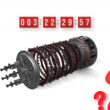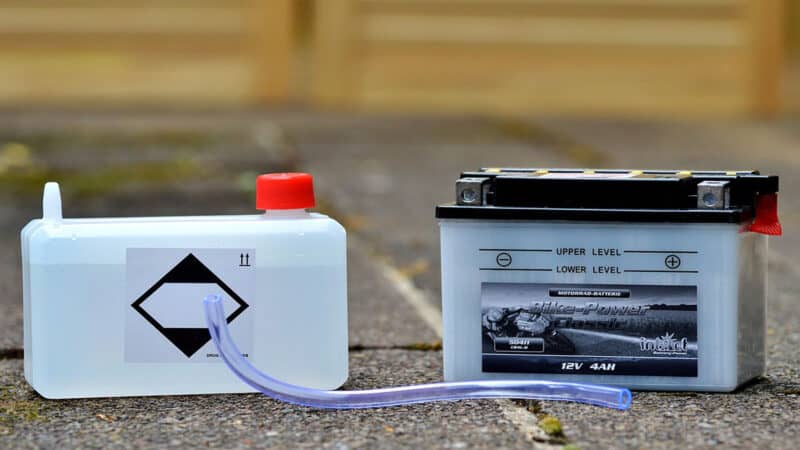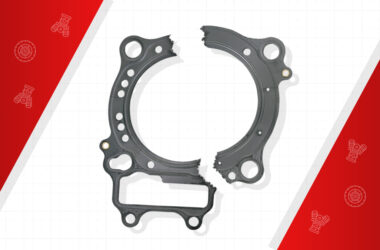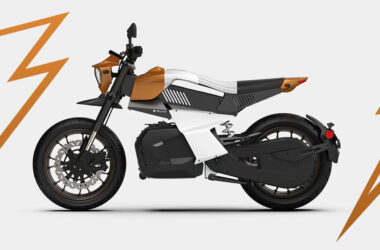Table of Contents Show
The battery is the crucial electric component that is required to start and run your motorcycle. Motorcycle battery type and its shelf life, lifespan, and self-discharge rate play a huge factor in determining how long a motorcycle battery can last.
These are four battery types that are widely used in motorcycles and how long they can last (lifespan).
- Lead Acid (Wet Cell) Motorcycle Battery Lasts 2-4 Years.
- Absorbent Glass Mat (AGM) Motorcycle Battery Lasts 3-5 Years.
- Gel Batteries For Motorcycle Lasts for 3-6 Years.
- Lithium Type Based Motorcycle Batteries Last 4-7 Plus Years.
Riding on weekends or daily commuting with a maintenance routine and battery storage methods will certainly impact the overall longevity of the motorcycle batteries.
So in this article, we will discuss how long a motorcycle battery typically lasts, what type of battery you should use in your motorcycle and how to take care and perform proper maintenance of your motorcycle’s battery.
What Is The Average Lifespan Of Motorcycle Batteries?
The average lifespan of motorcycle batteries is around 3 to 5 years, and a proper maintenance routine and storage method of the battery can prolong its life.
Someone who rides a motorcycle on regular basis will keep the battery in working condition and will possibly avoid the self-discharge period where the motorcycle is stored for a couple of months(2-3).
After a certain time(years), the battery may not operate efficiently and will start to lose its charge much faster, where the chemical compound of certain kinds of batteries will degrade.
There can be other factors such as bulging of battery casing, leaking, not being able to maintain the charge or any kind of physical damage to the battery itself at that time you can replace the old 12v motorcycle battery with a new one.
As you know there are different types of motorcycle batteries available in the market with varying prices and choosing the right one can save maintenance time and money.
Which Motorcycle Battery Type You Should Choose?
Most motorcycles come with lead-acid batteries because of low-cost manufacturing and cost-cutting.
But if you want to get the most out of your battery, then install Lithium based battery or absorbent glass mat battery in your motorcycle.
These two battery types offer the most reliability and longevity and are known to operate well at low temperatures during the winter season.
Lithium-based batteries are the lightest and weigh around 400 to 700 grams with a smaller overall size(dimensions).
Most lithium-based batteries from reputable motorcycle battery manufacturers cost around $100 to $300, depending on the type and model of the motorcycle.
Absorbent glass mat batteries cost around $100 to $200 and weigh around 2 to 3 kg depending on the type and model of the motorcycle and are the perfect alternative if you want to save money but go for a good battery with impressive power, efficiency, and longevity.
During cold winter seasons, try warming up the battery by turning the motorcycle headlights on for 15-20 seconds and avoid charging the batteries below 0° degrees Celcius.
Charging below 0° degree Celcius causes the formation of sharp-edged dendrites which are metallic microstructures that form on the negative electrode during charging and can pierce the separation membrane of the cathode (positive electrode) resulting in a short circuit.
Lithium-based or absorbent glass mat batteries are the most reliable and safer options available in the market and a good investment for your motorcycles.
What Causes Motorcycle Battery To Lose Its Charge?
A healthy motorcycle battery reads a voltage rating of 12.5 volts to 14 volts, you can check the voltage reading by using a multimeter.
As motorcycle battery ages it tends to lose the capacity to hold a charge for a longer time. The self-discharge rate of the battery also increases and the frequency of charging the battery increases too.
There are multiple common reasons, which can cause your motorcycle battery to drain faster.
- Old Motorcycle Battery.
- Motorcycle Sitting In Garage For Couple Of Months.
- Corroded Or Unclean Battery Terminal Connections.
- Improper Battery Storage & Maintenance Routine.
- Faulty Stator Or Regulator/Rectifier Of Motorcycle.
Old Motorcycle Battery
This one is pretty obvious as the battery ages over 2 or 3 years it will not work optimally as it used to. Some lead acid batteries have bulging or cracks in the cashing or even a chemical leak, at that time it’s better to replace it with a new one.
The ability to hold the charge and even the charging process gets noticeably poor as the battery age.
Try opting for Lithium-based or absorbent glass mat batteries for your motorcycle.
Motorcycle Sitting In Garage For Couple Of Months
Every battery has a self-discharging rate where the battery and the motorcycle are sitting idle for a couple of months ( 2 or 3 months).
Leaving the headlights on by mistake will also drain the battery but this is the least probable scenario to occur on regular basis.
Conventional lead acid batteries drain faster, where they lose up to 5% of charge per month.
Absorbent glass mat battery loses up to 2% to 2.5% of charge per month and lithium-based batteries lose up to 1% to 2% of charge per month.
If you are storing your motorcycle and not using it for a prolonged time, then consider removing the battery from the motorcycle.
Maintain the battery’s charge by using a battery charger to maintain the voltage range of the battery around 12.5 volts to 14 volts.
Corroded Or Unclean Battery Terminal Connections
Look out for the formation of corrosion on the terminal connections of the battery.
Keep the positive and negative terminals of the battery clean so it can operate efficiently.
Improper Battery Storage & Maintenance Routine
Motorcycle batteries do not operate effectively under extreme hot or cold temperatures and require a proper storage and maintenance routine.
During cold winters if you are not riding your motorcycle and keeping it in a garage for a couple of months or even a month, then remove the battery from the motorcycle and store it somewhere in your house at room temperature.
Maintain the charge of the battery between 12.5 volts to 15 volts by using a charger that is compatible with your battery type.
You can check the voltage of the battery using a multimeter every week to see whether it needs charging or not and the self-discharge rate of the battery will depend upon its type.
Never let lithium-based batteries go under deep self-discharge where the voltage might drop to 11 volts which can make the battery pretty unusable.
If you are riding frequently during the cold winter season, then insulate your garage to preserve heat and use a waterproof motorcycle cover.
Be sure to turn on the headlights for 15 to 20 seconds before starting your motorcycle for the battery to prime and warm up.
Faulty Stator Or Regulator/Rectifier Of Motorcycle
Motorcycle batteries get charged when you ride the motorcycle where the stator generates alternate current inside the rotor, which is then supplied to the regulator/rectifier to convert it to direct current.
The direct current goes to the battery and charges it. A bad stator coil or the polls/housing or regulator will disrupt the electric flow which will result in the battery being unable to be charged and finally getting drained.
Here’s my in-depth article on bad motorcycle stators and how you can recognize and fix them.
How To Charge & Maintain Motorcycle Battery?
Depending on the motorcycle battery type it has a dedicated charging system for it.
But chargers like battery tender junior 800 are versatile all-in-one chargers that can charge lead-acid, AGM, gel, and even lithium (LifePO4) batteries.
If you regularly ride your motorcycle then there’s no need to charge your motorcycle’s battery because while riding motorcycle’s stator and regulator creates and converts electric power, which charges the battery of your motorcycle.
But if you are letting your motorcycle sit in a garage for weeks and probably even months then remove the battery from the motorcycle and check on a weekly basis the voltage rating of your motorcycle’s battery using a multimeter.
A healthy battery has a voltage rating of 12.5 volts to 14 volts, if you see that voltage is going under 12.5 volts then charge it to a smart charger which will stop charging once it’s fully charged to avoid overcharging.
Don’t let the voltage rating drop under 11 volts where it’s considered a high level of self-discharge rate where the battery might become unusable and will need replacement.
Avoid charging in cold temperatures and store the battery at room temperature if you are not riding on a regular basis.
And that’s how you charge and maintain the good condition of a motorcycle battery.
Conclusion
Motorcycle lifespan depends on the battery type and its maintenance and storage routine, so invest in a good battery and follow a proper care routine as discussed in this article.







